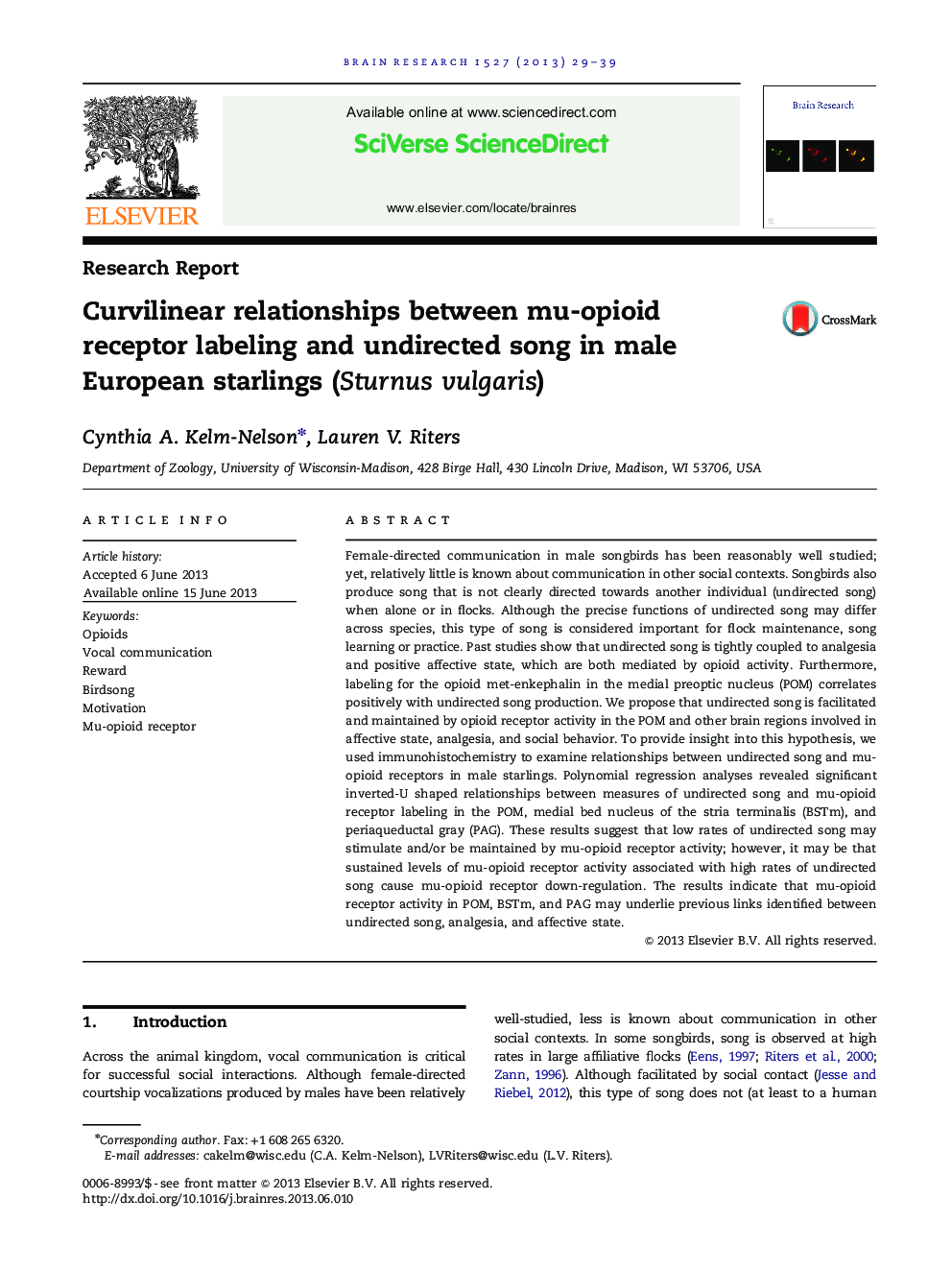| کد مقاله | کد نشریه | سال انتشار | مقاله انگلیسی | نسخه تمام متن |
|---|---|---|---|---|
| 4324569 | 1613912 | 2013 | 11 صفحه PDF | دانلود رایگان |

• Starlings sing variable rates of undirected song in the non-breeding season.
• POM, BSTm, and PAG mu-opioid receptor label showed inverted-U shaped links to song.
• Mu-opioid receptor activity may explain links between song and affective state.
Female-directed communication in male songbirds has been reasonably well studied; yet, relatively little is known about communication in other social contexts. Songbirds also produce song that is not clearly directed towards another individual (undirected song) when alone or in flocks. Although the precise functions of undirected song may differ across species, this type of song is considered important for flock maintenance, song learning or practice. Past studies show that undirected song is tightly coupled to analgesia and positive affective state, which are both mediated by opioid activity. Furthermore, labeling for the opioid met-enkephalin in the medial preoptic nucleus (POM) correlates positively with undirected song production. We propose that undirected song is facilitated and maintained by opioid receptor activity in the POM and other brain regions involved in affective state, analgesia, and social behavior. To provide insight into this hypothesis, we used immunohistochemistry to examine relationships between undirected song and mu-opioid receptors in male starlings. Polynomial regression analyses revealed significant inverted-U shaped relationships between measures of undirected song and mu-opioid receptor labeling in the POM, medial bed nucleus of the stria terminalis (BSTm), and periaqueductal gray (PAG). These results suggest that low rates of undirected song may stimulate and/or be maintained by mu-opioid receptor activity; however, it may be that sustained levels of mu-opioid receptor activity associated with high rates of undirected song cause mu-opioid receptor down-regulation. The results indicate that mu-opioid receptor activity in POM, BSTm, and PAG may underlie previous links identified between undirected song, analgesia, and affective state.
Journal: Brain Research - Volume 1527, 21 August 2013, Pages 29–39